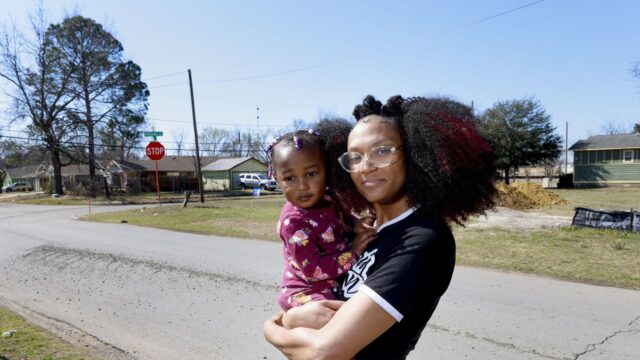
By Dallas Mornings News Editorial
If you live in a southern Dallas neighborhood, odds are that you will encounter certain air quality issues that your neighbors in other parts of Dallas will not. That’s the stark reality of Dallas’ persistent north-south divide.
But we hope the seeds of change are being planted in Joppa, a former freedman community named for a city in the Bible, where residents have complained for years of health risks from foul-smelling air. As reported last week by our Sriya Reddy, the Joppa Environmental Health Project, a joint effort of residents and Texas A&M scientists, will be studying the air in the neighborhood for a correlation between polluting particulates and bad health symptoms. Funded by the Robert Wood Johnson Foundation, the project is considered the largest investigation of environmental health in Dallas-Fort Worth and a potentially groundbreaking study of the impact of exposure to particulates in a local neighborhood of color.
This is an important step one. To know what Joppa residents are breathing requires air quality measuring equipment. But there needs to be a step two as well — a commitment to use the data to shape a policy that ensures residents of neighborhoods with less wealth aren’t treated as environmental second-class citizens.
It is time for the city to think creatively about how it might use results of this and other air quality studies to devise a comprehensive strategy to reverse Dallas’ long history of environmental degradation in underserved areas. Poor air quality, especially if it can be traced to nearby industrial projects, is one of many factors that hinder meaningful residential investment in neighborhoods like Joppa, West Dallas, the Bottom and in Floral Farms, the site of Shingle Mountain, a since dismantled massive multistory pile of illegally dumped toxic roofing debris.
For example, Paul Quinn College researchers found that residents in mostly minority neighborhoods in southern Dallas were disproportionately exposed to the pollutants produced at nearby industrial facilities. And in a separate measure, Dallas has used money from the Nature Conservancy and the Texas A&M Transportation Institute to install air monitors in some neighborhoods to compare parts of the city with high rates of childhood asthma to more affluent areas with fewer breathing problems.
In general, Texas law bars cities from establishing environmental standards that are tougher than state requirements. Nonetheless, Dallas has an opportunity to use neighborhood-level data to help undo the lingering adverse environmental impact of previous zoning and land use decisions.
And we hope we are seeing signs of change. At the request of council member Paula Blackmon, who chairs the council’s environment and sustainability committee, the city is considering new rules that could lead to more public notice and a specific use permit when an asphalt or concrete batch plant wants to operate in the city. Blackmon also wants the city to be an advocate for residents on air quality issues.
Data collection without effective policy to back it up is more of the same. Dallas has a chance to replace environmental indifference with a forward-looking policy that helps ensure some residents aren’t getting worse air just by virtue of their address.









